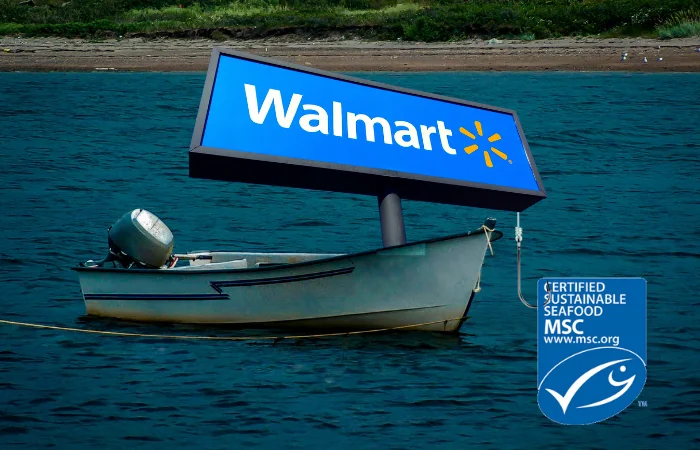Entering a Walmart with a clear goal in mind, one might be struck by the bold claims of “100% certified sustainable seafood” adorning the aisles. This is the modern shopper’s dilemma: navigating the complex world of sustainability in our everyday choices. The journey starts with a simple decision – salmon or shellfish for dinner – but quickly delves into deeper questions about the impact of our consumption habits.
The crisis facing the world’s fisheries is no small matter, with overfishing and harmful practices depleting stocks and damaging ecosystems. This has led to a growing awareness and a personal commitment among many to seek out sustainable options.
Big retailers like Walmart have responded, promising to source only sustainable seafood. Such commitments appear as a beacon of hope, suggesting a shift towards responsible consumerism that could influence larger environmental policies.
However, the truth about sustainability isn’t as clear-cut as it seems. A closer look at the labels reveals a promise of future sustainability, rather than current compliance, prompting questions about what sustainability really means.
Who defines and monitors these standards?
The exploration leads to organizations like the Marine Stewardship Council (MSC), entangled with corporate interests, complicating the narrative further.
This introduction to the world of sustainable seafood shopping is a journey from hopeful simplicity to a realization of the intricate challenges involved. It’s a tale of a conscientious consumer grappling with the realities of eco-labels, corporate promises, and the ongoing struggle to make choices that truly benefit our oceans.
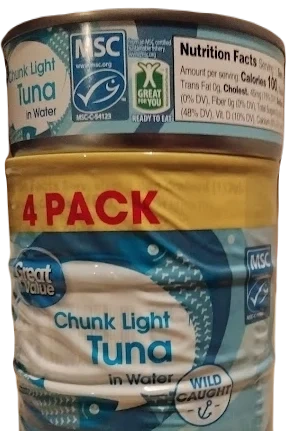
The Environmentally Inconvenient, Convenient Walmart & MSC Love Triangle
The relationship between Walmart, sustainability certifications, and healthy oceans is complicated. Walmart, the world’s largest company by revenue, has incredible power to shift systems with its purchasing. Recognizing this, Walmart made waves when it pledged to source all its seafood from MSC-certified sustainable fisheries by 2011.
This decision meant Walmart would become the largest seafood buyer from MSC-approved fisheries overnight. Fisheries would scramble to get the label and gain this lucrative new market access.
MSC was a fledgling organization in 2006 when Walmart made its commitment, In fact, the argument could be made that Walmart built MSC into what it is today.
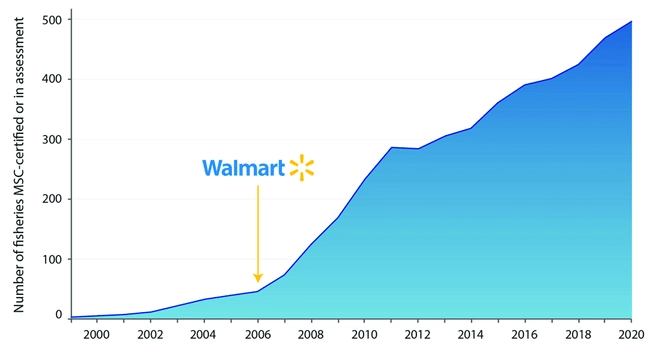
MSC’s model involved charging sustainable fisheries for eco-labels to put on their catch. More certified fisheries meant more money for MSC. Unsurprisingly, with Walmart’s pledge, MSC’s income and certified fisheries exploded. Their budget grew nearly 10 times from 2005 to 2013. The number of MSC-approved fisheries increased 7-fold in the same period.
Conservation groups started questioning whether MSC was lowering sustainability standards to push more certifications and swell its war chest. Evidence indicates the concerns had merit:
- 73% of MSC’s income came from certification licensing fees in 2015.
- 1/3 of fisheries didn’t meet scientific sustainability criteria yet were MSC-approved.
- Some certifications permitted damaging practices like trawling and bycatch.
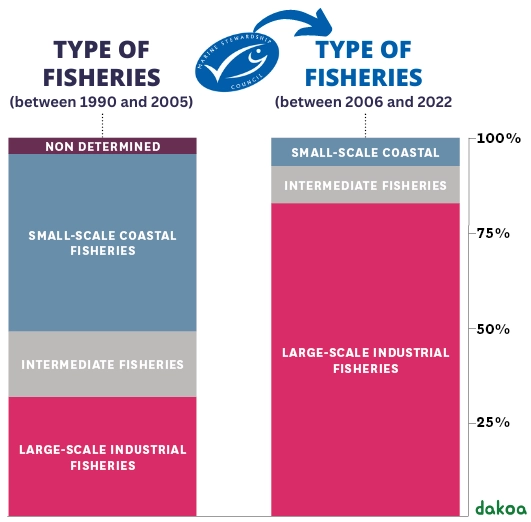
Essentially, MSC’s model depended on certifying fisheries, not rigorously upholding sustainability principles. Their standards determine what kind of fishing Walmart can claim is “sustainable.”
Walmart already modified its initial goal of 100% certified seafood because so few MSC-approved fisheries existed. It now includes seafood “on the path” to sustainability. Some fisheries overfishing endangered bluefin tuna even got MSC certifications under this diluted goalpost moving.
So, Walmart can technically meet its sustainability purchasing targets without changing business practices undermining sustainability, like importing cheap seafood from halfway across the globe. The MSC label provides cover for Walmart’s global supply chain impacts, thanks to questionable standards and credentialing processes.
Whether Walmart’s sustainability programs help improve wild fisheries remains debated. However, MSC and Walmart recently asked governments for more regulatory oversight on tuna fishing quotas and monitoring. Ironically, these former opponents of regulations now seek governmental assistance – undermining past claims that self-governing market initiatives could enforce sustainability alone.
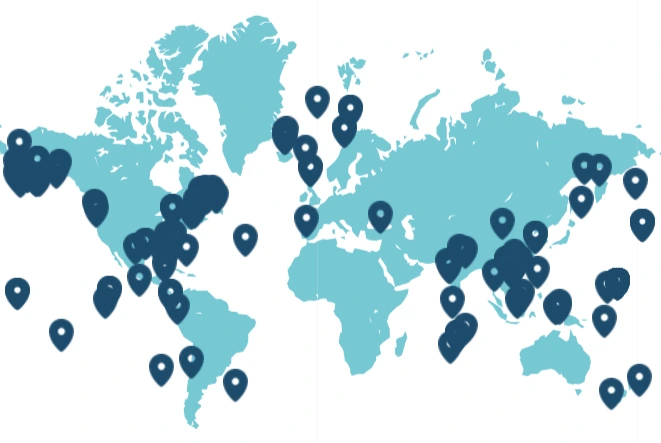
Walmart’s Questionable Sustainability Claims Backed by Their Financial Dominance
Follow the money, and the twisted incentives behind Walmart’s sustainability programs become clearer.
In 2010, when Walmart made its big sustainable seafood pledge, MSC had a budget of just over $2 million. That same year, the Walton Family Foundation, owned by Walmart founders, gave MSC $4.5 million. The Waltons’ deep pockets fundamentally transformed the tiny eco-labeling organization.
The Walton family money continued flooding into MSC. Grants fluctuated year-to-year, but consistently clocked in at seven figures. A 2021 donation topped $1 million from Walmart’s founding family to the certification body that determines if Walmart’s seafood meets sustainability criteria.
Conservation groups traced how MSC’s motivations warped after the Walmart effect took hold.
By 2015, MSC derived a full 73% of income – $14 million that year – from licensing its eco-label to fisheries. Placating its biggest money-funnel, Walmart, became an existential incentive for the non-profit.
Prioritizing growth, MSC pursued major seafood suppliers to get the sustainability tag, and the Walmart account that came with it. The ensuing shortcuts and slippages pushed MSC farther from its conservation mission.
Walmart’s financial reliance on MSC to verify its sustainability claims also perpetuates questionable incentives on both sides:
Walton Family Foundation Contributions to MSC:
- 2010 – $4.5 million
- 2013 – $1 million
- 2021 – $1.05 million
This money has engorged MSC’s budget by nearly 10 times since Walmart pledged to source seafood through the organization. In return, MSC provides credentials allowing Walmart to continue business-as-usual without changing underlying practices damaging fisheries worldwide.
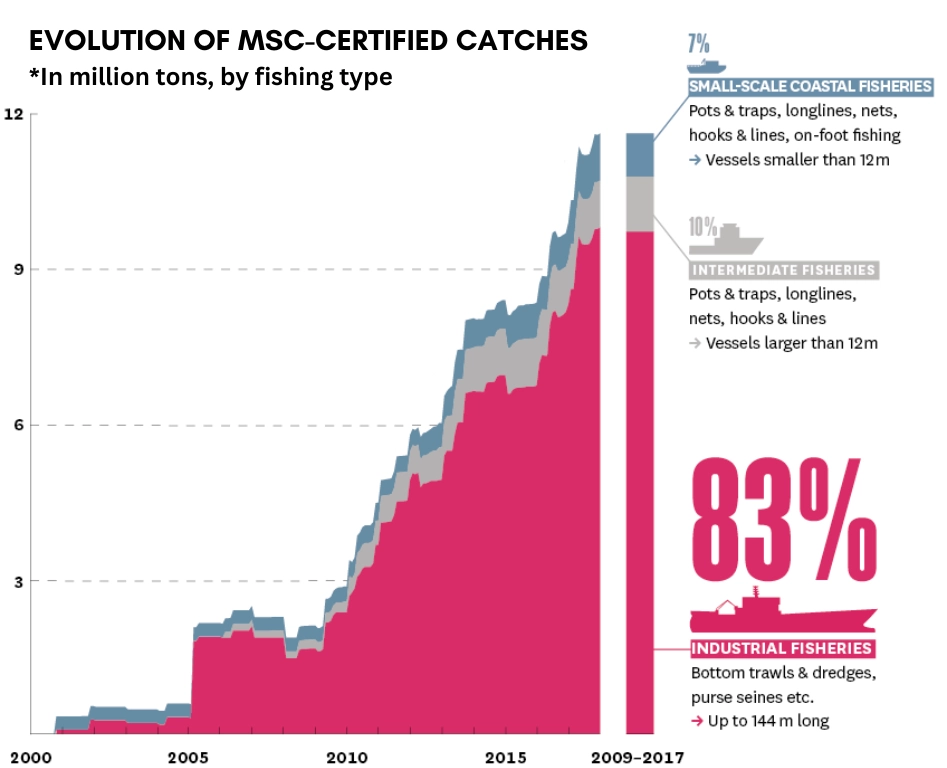
The Plot, And Relationship Between Walmart & MSC, Deepens
Rigged Objections Make Questioning MSC Certifications Nearly Impossible
When scientists and environmental advocates raised concerns over controversial MSC certifications, they found a fee-based objection process designed to disregard their input. Groups paid up to $20,000 to file sustainability objections, only to have them immediately rejected without considering scientific evidence.
You read that correctly! For a non-profit or environmental activist group to wage a complaint against a deep-pocketed MSC certified company, they had to raise between $15,000 and $20,000 and that was only for the price of the nonrefundable filing and processing fee. Once received, the objection was almost always quickly rejected, while the MSC kept the money.
The Walton Family Foundation’s money had transformed MSC from an accountability watchdog to an unquestioning lapdog.
With Walmart At The Financial Helm, Small Scale Fishermen Are Second-Class And Mostly Ignored
MSC’s shiny sustainability label overwhelmingly went to industrialized fisheries, even though over 80% of global fishermen are small-scale operators supplying their local communities.
Under MSC’s model, only 16% of certified sustainable fisheries were small-scale.
From South America to Africa, MSC certification empowered industrial fleets while weakening and displacing local fishermen who fed their communities. Critics alleged deceptive marketing practices that over-represented small fishermen to hide this imbalance. Needless to say, neither Walmart or the MSC are concerned.
Walmart Has Greenwashed Away The Words “Sustainability” and “Regenerative”
By loose definitions of “sustainable fishing,” MSC approved certifications for 1/3 of fisheries failing scientific sustainability criteria. Their standards allowed damaging practices like trawling and longlining without an outright ban. These discrepancies provided cover for Walmart and others to maintain status quo operations while claiming sustainability cred. Critics argued Walmart and MSC used each other to greenwash unsustainable practices and overfishing without changing underlying behaviors.
Limits of Letting Industry Self-Police
For decades, Walmart and partners championed free-market solutions without government intervention as sufficient to govern sustainability issues. By leaning on MSC’s suspect branding, Walmart enforced compliance without changing practices. However, with systemic failures to protect fisheries, both organizations recently lobbied governments for increased regulations — undermining longstanding claims of self-governance virtues.
Regrowing Regenerative Rhetoric
After years depending on MSC’s rubberstamp, Walmart now says it wants to become a “regenerative company” restoring the planet’s vitality through its operations. However, Walmart’s core business continues to depend on sourcing massive resources for global circulation through stores. The world’s largest retailer announced this in 2020, and would you like to know what they’ve done since to make it happen?
Nothing.
Of course, that doesn’t surprise Walmart’s environmentally conscious critics. Sadly, just as the company did for the word “sustainable”, the word “regenerative” will end up being defined by Walmart and will, therefore, become meaningless.
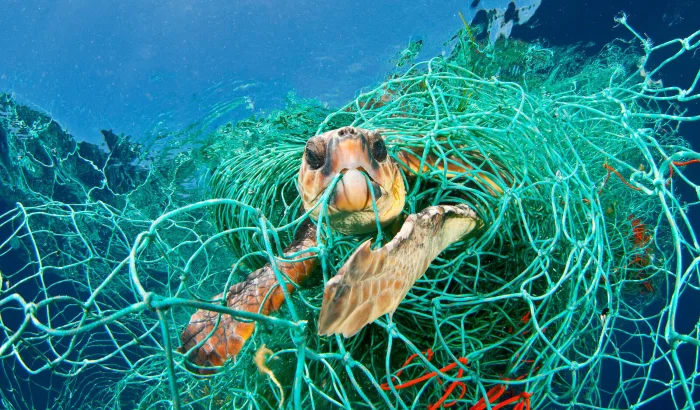
Conclusion
As we stroll through the aisles of stores, we encounter products adorned with promises of sustainability. Labels like “sustainable” and “regenerative” catch our eye, offering a glimmer of hope for a greener future. But beneath these shiny labels lies a stark reality: in a world where giants of industry prioritize low prices through resource exploitation, can they truly be stewards of our environment?
The truth is, retail giants like Walmart, with their focus on maximal resource extraction and rampant consumerism, have inadvertently contributed to the climate crisis and ecological breakdown we face today. These companies may talk the talk of sustainability, but often, it’s little more than empty rhetoric.
More To Discover
- Great Lakes Ice Cover Lowest In 50 Years: Why It’s a Major Environmental Concern
- The Billion-Dollar Trust Issue: When the Price of Scientific Publishing Eclipses the Value of Knowledge
- MIT’s Solar-Powered Desalination System Could Produce Freshwater Cheaper Than Tap Water For Most Of The World
- Iceland Unveils World’s Largest ‘Climate Vacuum’ to Tackle Atmospheric Carbon
For conscientious consumers like us, it’s easy to be lured by eco-friendly tags, but are these labels backed by genuine standards or marred by financial conflicts of interest? Do they truly address the systemic issues faced by small fishermen and communities around the world?
The reality is that our power as individual shoppers is limited in a system that often marginalizes our voices. Holding a sustainably labeled product in our hands may give us a fleeting sense of accomplishment, but real change demands more. It requires us to join a collective movement, one that advocates not just for superficial sustainability but for fundamental structural shifts.
We must recognize that meaningful change starts with small steps, with each of us choosing to make a difference. While the path to a sustainable future may seem daunting, it begins with our choices in the here and now. Let’s remember that the journey toward a brighter, more sustainable world begins with us, right here, right now.








